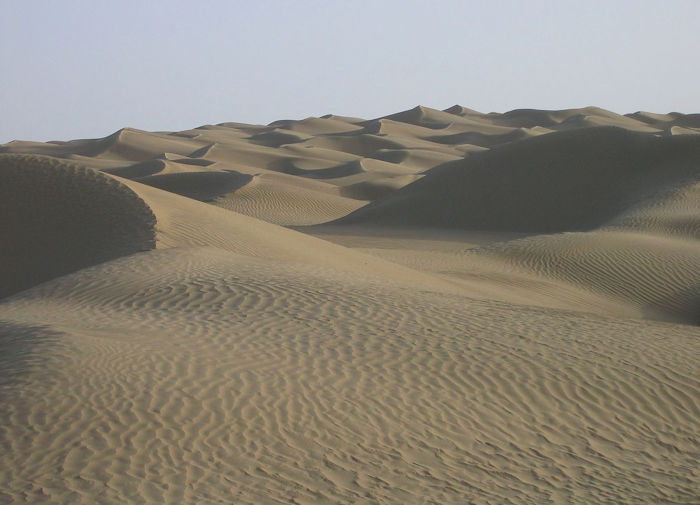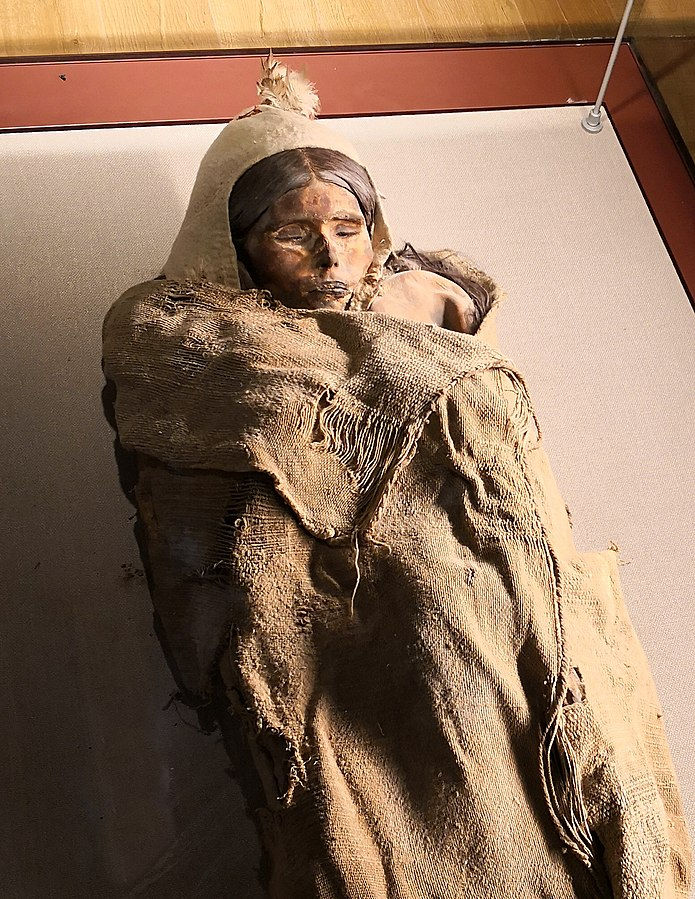Secret Ancient World Buried Under The Vast Takla Makan Desert
A. Sutherland - AncientPages.com - Ancient people believed that there was no way out once you entered this place. A very long time ago, there were houses and temples here. Today, everything is buried under the sand.
Precious ancient relics are hidden deep under the "Sea of Death," or the Taklamakan desert.
Takla Makan Desert - Credit: Wikipedia - CC BY-SA 4.0
Archaeologists are beginning to discover some of the secrets that have been hidden in this mysterious region. Still, it seems we are only scratching the surface, and only time will tell what more wonders are waiting to be unraveled.
The Taklamakan desert is the largest in China. It is also considered the world's second-largest shifting-sand desert covering an area of over 33 700 square kilometers (over 13,000 square miles). In the Uigur language, Takla Makan means 'you can get into it but can never get out'; that is why the desert is also called 'the Sea of Death.'
The desert is very significant to the people in this region.
Map of the Silk Road crossing the deserts and Eurasian Steppe in Central Asia. Image credit: Alexander.stohr - CC BY-SA 3.0
According to an ancient legend, a powerful Supernatural Being once a long time ago saw the people in this area and thought he could help them by using the two magic objects in his possession, namely the golden ax and the golden key.
He gave his golden ax to the Kazakh, so they split the mountain Altai and diverted water from the mountains to the fields.
Then, the Supernatural Being planned to give the golden key to the Uigur so that they could open the door of the treasure house of the Tarim Basin, but unfortunately, his youngest daughter lost the key. It angered him so much that he held her captive in the Tarim Basin and thus formed the Taklamakan Desert.
In more modern times, historians learned that the Taklamakan desert played a vital business role.
Ruins of an ancient Silk Road town. Credit: Adobe Stock - knovakov
There are oases located on two routes around the desert that served as important trading spots on the so-called Silk Road. Of all the precious goods crossing this area, silk was perhaps the most remarkable for the people of the West.
In 1896, Swedish explorer Sven Hedin made a surprising discovery at the oasis town Dandan Oilik ("the houses with ivory"), today an abandoned historic oasis town and Buddhist site in the Taklamakan Desert of China.
In an interview with English People Daily, Zhang Yuzhong, former deputy director of Xinjiang Archeology Research Institute, explained that in the past, experts in China and abroad had believed there was no trace of humans in the desert.
But Sven Hedin found many remains of houses. Then, Aurel Stein, a pioneer of the Silk Road, stayed there for two weeks, found the remains of another 18 residential houses, and identified some temples. He also found documents from the Tang and Han dynasties.
In 1900, Hedin once again visited the Taklamakan. In this expedition, he found the ruins of the ancient city of Loulan, buried under the sand, the capital of the Loulan Kingdom, which dates back even further than Dandan Orlik.
These two discoveries, Dandan Oilik and Loulan, are signature archeological events in Xinjiang."
In 1910, ten years after Loulan was found, a local hunter discovered a tomb near a creek 175 kilometers from Loulan. It was named the "creek tomb." The tomb, built with more than 100 wooden poles, was erected on a dune. It is regarded as one of the most intriguing mysteries of ancient Asian civilization. It belongs to the early bronze age, whose history in Xinjiang goes back to 4,000 years ago.
Half a century later, in 1979, a female corpse dating back nearly 4,000 years was discovered in Loulan. The corpse was well preserved and nicknamed the "Beauty of Loulan."
Loulan beauty. Credit: Wikipedia - CC BY-SA 4.0
In 1995, ancient brocade appraised as made in Sichuan province during the Han dynasty was found at Niya ruin in the south of the Taklamakan Desert. It became one of the top archeological finds that year.
In 2003, another well-kept female corpse was found during a dig at the "creek tomb." Also estimated at over 4,000 years old, the corpse still had beautiful facial features, thick eyelashes, and a visible smile. Her beauty once again stunned the world 24 years after the discovery of Loulan beauty. A funeral system involving "reproduction worship" was also revealed."
Who inhabited this region, and what contact did they have with the European continent?
In the late 1980s, several well-preserved mummies were discovered in the Taklamakan desert. The perfectly well-preserved mummies are estimated to be at least 3000 years old. The corpses reveal that the people had long reddish-blond hair and European features and didn't appear to be the ancestors of modern-day Chinese people. Archaeologists now think they may have been the citizens of an ancient civilization that existed at the crossroads between China and Europe.
It would seem an entire secret ancient world is hidden beneath the sand. What more surprising discoveries will archaeologists encounter at this dangerous and mysterious place?
Written by – A. Sutherland AncientPages.com Senior Staff Writer
Updated on January 5, 2023
Copyright © AncientPages.com All rights reserved. This material may not be published, broadcast, rewritten or redistributed in whole or part without the express written permission of AncientPages.com
More From Ancient Pages
-
 Mysterious Viking Burial Site Of Three Women In Norway Reveals Its Secrets
Vikings | Dec 26, 2024
Mysterious Viking Burial Site Of Three Women In Norway Reveals Its Secrets
Vikings | Dec 26, 2024 -
 Unsolved Ancient Mystery Of Hand Of Prêles – Unique Discovery Of Ancient Bronze Hand Puzzles Scientists
Archaeology | Sep 28, 2018
Unsolved Ancient Mystery Of Hand Of Prêles – Unique Discovery Of Ancient Bronze Hand Puzzles Scientists
Archaeology | Sep 28, 2018 -
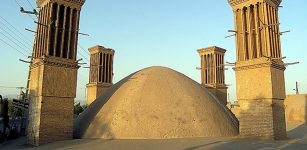 Remarkable Ancient Windcatchers: Air Conditioning Systems Built Since Antiquity
Ancient Technology | Sep 3, 2016
Remarkable Ancient Windcatchers: Air Conditioning Systems Built Since Antiquity
Ancient Technology | Sep 3, 2016 -
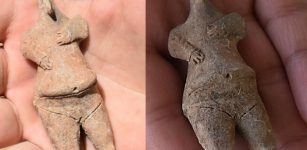 7,800-Year-Old Clay Female Figurine Unearthed In Ulucak Mound, Turkey’s Izmir
Archaeology | Aug 17, 2022
7,800-Year-Old Clay Female Figurine Unearthed In Ulucak Mound, Turkey’s Izmir
Archaeology | Aug 17, 2022 -
 People With Neanderthals’ Pain-Related Gene May Suffer More On A Daily Basis
DNA | Jul 27, 2020
People With Neanderthals’ Pain-Related Gene May Suffer More On A Daily Basis
DNA | Jul 27, 2020 -
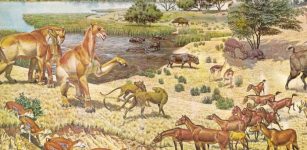 Horses In Florida Did Not Travel Far Distances – New Study Suggests
Archaeology | Jan 3, 2019
Horses In Florida Did Not Travel Far Distances – New Study Suggests
Archaeology | Jan 3, 2019 -
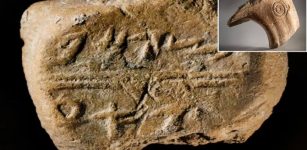 Part Of Jerusalem’s Wall Destroyed By The Babylonians In 586 BC – Unearthed
Archaeology | Jul 30, 2021
Part Of Jerusalem’s Wall Destroyed By The Babylonians In 586 BC – Unearthed
Archaeology | Jul 30, 2021 -
 First AI-Based Method For Dating Archaeological Remains Developed By Researchers
Archaeology | Aug 23, 2022
First AI-Based Method For Dating Archaeological Remains Developed By Researchers
Archaeology | Aug 23, 2022 -
 Unearthing South Australia’s Oldest Known Shipwreck: The Bark South Australian (1837)
Archaeology | Aug 16, 2023
Unearthing South Australia’s Oldest Known Shipwreck: The Bark South Australian (1837)
Archaeology | Aug 16, 2023 -
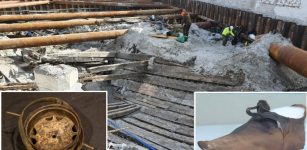 Surprising And Fascinating Finds On The Wreck Of The Lootsi Cog
Archaeology | Nov 27, 2023
Surprising And Fascinating Finds On The Wreck Of The Lootsi Cog
Archaeology | Nov 27, 2023 -
 Intriguing Ket People – The Last Nomadic Hunter-Gatherers Of Siberia
Featured Stories | Nov 23, 2023
Intriguing Ket People – The Last Nomadic Hunter-Gatherers Of Siberia
Featured Stories | Nov 23, 2023 -
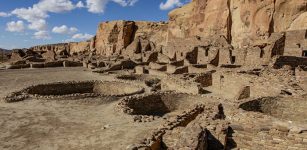 Social Tensions Among Ancient Pueblo Societies Contributed To Their Downfall – Not Only Drought
Archaeology | Apr 27, 2021
Social Tensions Among Ancient Pueblo Societies Contributed To Their Downfall – Not Only Drought
Archaeology | Apr 27, 2021 -
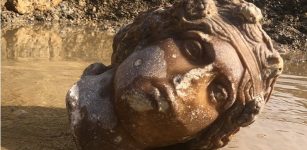 Statue Heads Of Dionysus And Aphrodite Discovered In The Ancient City Of Aizanoi
Archaeology | Dec 12, 2023
Statue Heads Of Dionysus And Aphrodite Discovered In The Ancient City Of Aizanoi
Archaeology | Dec 12, 2023 -
 Mythical Place Where Gorgon Medusa Dwelled And Was Killed May Have Been Found By Archaeologists
Featured Stories | Sep 15, 2024
Mythical Place Where Gorgon Medusa Dwelled And Was Killed May Have Been Found By Archaeologists
Featured Stories | Sep 15, 2024 -
 Ancient Burial Chambers Decorated With Mythological Figures Of Hercules, Medusa, Eros – Unearthed In Bursa, Turkey
Archaeology | Feb 21, 2017
Ancient Burial Chambers Decorated With Mythological Figures Of Hercules, Medusa, Eros – Unearthed In Bursa, Turkey
Archaeology | Feb 21, 2017 -
 Biblical Mystery Of The Forbidden Fruit And The ‘Deep Sleep’
Ancient Mysteries | Feb 13, 2022
Biblical Mystery Of The Forbidden Fruit And The ‘Deep Sleep’
Ancient Mysteries | Feb 13, 2022 -
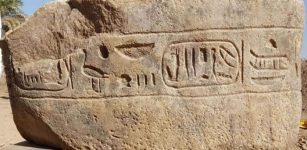 Royal Colossi Fragments, Mud Brick Wall And Pottery Uncovered In Matariya, Egypt
Archaeology | Dec 4, 2019
Royal Colossi Fragments, Mud Brick Wall And Pottery Uncovered In Matariya, Egypt
Archaeology | Dec 4, 2019 -
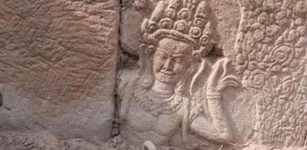 Apsara Carvings Dated To 12th Century Uncovered At Takav Gate In Angkor, Cambodia
Archaeology | May 5, 2022
Apsara Carvings Dated To 12th Century Uncovered At Takav Gate In Angkor, Cambodia
Archaeology | May 5, 2022 -
 Baffling Copper Scroll – A Treasure Map Leading To A Secret Lost Temple?
Featured Stories | Mar 17, 2018
Baffling Copper Scroll – A Treasure Map Leading To A Secret Lost Temple?
Featured Stories | Mar 17, 2018 -
 Chilling Graffiti Found In 1,600-Year-Old Roman Prison In Corinth, Greece
Archaeology | Aug 19, 2024
Chilling Graffiti Found In 1,600-Year-Old Roman Prison In Corinth, Greece
Archaeology | Aug 19, 2024

